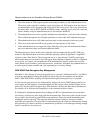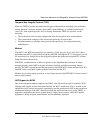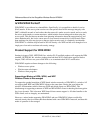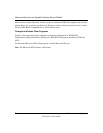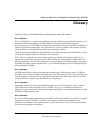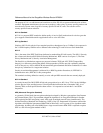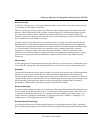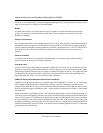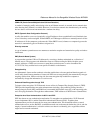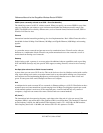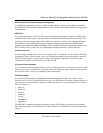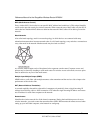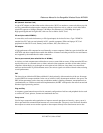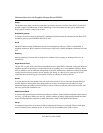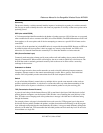
Reference Manual for the RangeMax Wireless Router WPN824
4 Glossary
202-10072-01, March 2005
for cables or wires. Bluetooth is a frequency-hopping technology in the 2.4 GHz frequency spectrum, with a
range of 30 feet and up to 11Mbps raw data throughput.
Bridge
A product that connects a local area network (LAN) to another local area network that uses the same
protocol (for example, wireless, Ethernet or token ring). Wireless bridges are commonly used to link
buildings in campuses.
Client or Client devices
Any computer connected to a network that requests services (files, print capability) from another member of
the network. Clients are end users. Wi-Fi client devices include PC Cards that slide into laptop computers,
mini-PCI modules embedded in laptop computers and mobile computing devices, as well as USB and PCI/
ISA bus Wi-Fi radios. Client devices usually communicate with hub devices like access points and
gateways.
Collision avoidance
A network node characteristic for proactively detecting that it can transmit a signal without risking a
collision, thereby ensuring a more reliable connection.
Crossover cable
A special cable used for networking two computers without the use of a hub. Crossover cables may also be
required for connecting a cable or DSL modem to a wireless gateway or access point. Instead of the signals
transferring in parallel paths from one set of plugs to another, the signals "crossover." If an eight-wire cable
was being used, for instance, the signal would start on pin one at one end of the cable and end up on pin
eight at the other end. They "cross-over" from one side to the other.
CSMA/CA (Carrier Sense Multiple Action/Collision Avoidance)
CSMA/CA is the principle medium access method employed by IEEE 802.11 WLANs. It is a "listen before
talk": method of minimizing (but not eliminating) collisions caused by simultaneous transmission by
multiple radios. IEEE 802.11 states collision avoidance method rather than collision detection must be used,
because the standard employs half duplex radios—radios capable of transmission or reception—but not both
simultaneously.
Unlike conventional wired Ethernet nodes, a WLAN station cannot detect a collision while transmitting. If a
collision occurs, the transmitting station will not receive an ACKnowledge packet from the intended receive
station. For this reason, ACK packets have a higher priority than all other network traffic. After completion
of a data transmission, the receive station will begin transmission of the ACK packet before any other node
can begin transmitting a new data packet. All other stations must wait a longer pseudo randomized period of
time before transmitting. If an ACK packet is not received, the transmitting station will wait for a subsequent
opportunity to retry transmission



